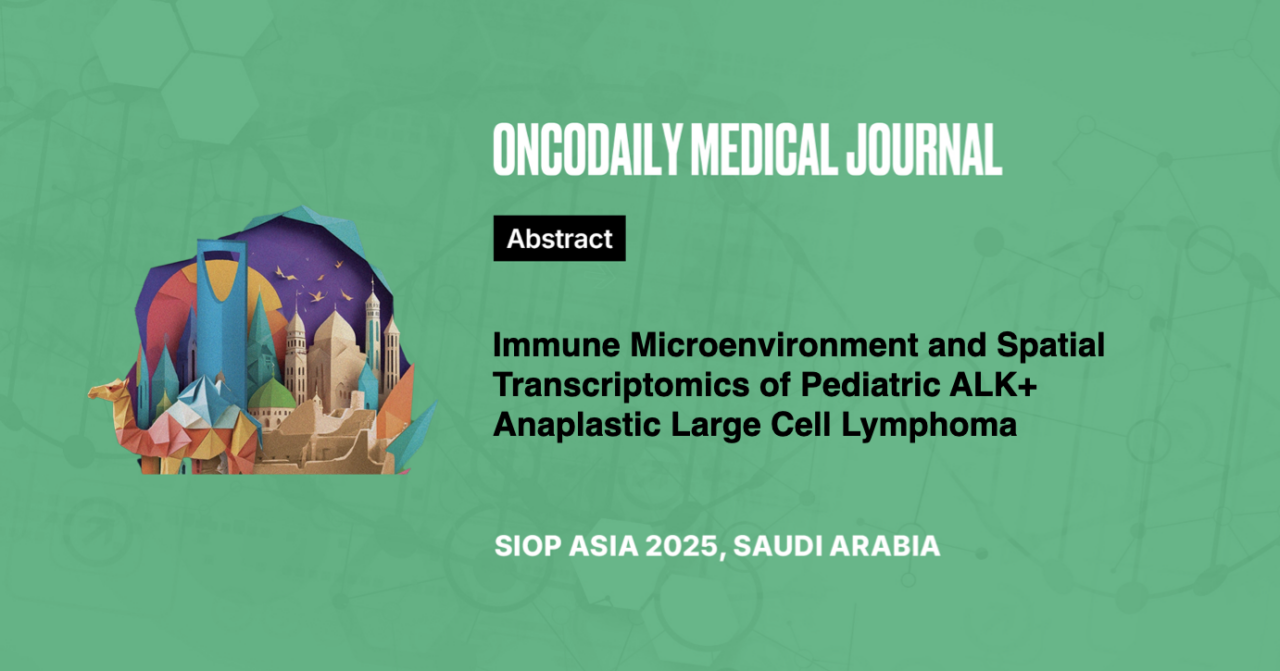Immune Microenvironment and Spatial Transcriptomics of Pediatric ALK+ Anaplastic Large Cell Lymphoma
Abstract
Introduction: Pediatric ALK+ anaplastic large cell lymphoma (ALK+ ALCL) is an aggressive yet treatable T-cell neoplasm. Despite relatively favorable outcomes with chemotherapy and targeted agents, some patients remain refractory or experience relapse. This highlights the need to study the tumor’s biological heterogeneity and its immune microenvironment. Advanced techniques like spatial transcriptomics offer novel insights into these factors, enabling the identification of potential therapeutic targets.
The purpose was to investigate the transcriptional profile, tumor microenvironment, and cellular composition of ALK+ ALCL in children using spatial transcriptomics technology.
Methodology: Spatial transcriptomics was performed on biopsy material from 4 pediatric ALK+ ALCL cases diagnosed at the Dmitry Rogachev National Research Center. Tumor samples from lymph nodes were analyzed using Visium 10x technology (USA), and sequencing was conducted on the NextSeq500/550 platform (Illumina, USA). Data from 2 samples were processed using Seurat, Cell2location, and STdeconvolve software in R and Python.
Results: Spatial transcriptomics revealed distinct clusters correlating with morphology and gene expression patterns. Tumor-associated regions showed significant heterogeneity, including zones of neoangiogenesis and areas enriched with stromal components. Immune microenvironment analysis identified T cells expressing the TIM3 receptor—a marker of dysfunctional T-cell subsets. Additionally, a large number of cancer-associated fibroblasts (CAFs) were observed.
Ligand-receptor analysis revealed interactions involving collagens and integrins, suggesting a role in tumor progression. Macrophage analysis demonstrated a predominance of M2-polarized macrophages, with fewer M1-polarized macrophages detected. Importantly, tumor cells and TIM3+ T cells were co-localized, reinforcing the potential of targeting TIM3 for immunotherapy.
Conclusion: Our findings demonstrate that pediatric ALK+ ALCL exhibits significant tumor and immune microenvironment heterogeneity. The identification of TIM3+ T cells as a major dysfunctional subset, their colocalization with tumor cells, and the predominance of M2-macrophages highlight TIM3 as a promising target for immunotherapy. These results pave the way for novel therapeutic approaches in pediatric ALK+ ALCL.





